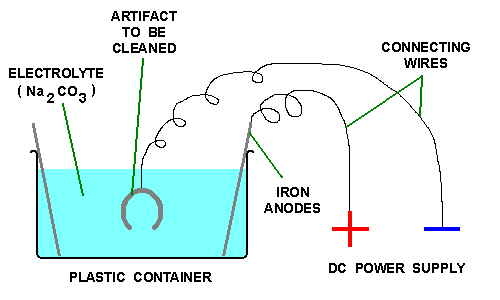This rusty tool came my way as part of a bundle of other tools.
A good example of the power of electrolysis.
I use a old fashioned battery charger, from about the 1970's
Set to 12Vdc, with the positive to the Anodes. Normally scrap steel.
Don't use copper wire to old the parts, it will dissolve. Don't leave the croc clips in the solution either.
I hang the item to be de-rusted from Mig Welding wire in the middle of the container.
I use 1 table spoon of Washing Soda to 1 Ltr of water. I adjust the mix as required.
A past session.
Any plastic container can be used.
I once did a Land Rover chassis in a paddling pool with a Old DC Arc Welder.
After 48 hours it was removed, dried well with a blow torch.
Then with wire wool and a wax/oil mix the black oxide is removed.
The black oxide can be baked on as a rust proof barrier as well.
If not there is always Citric acid.
















